This is a five day weekend for fall break, but I managed a month's worth of events in the first two days. The second school ended on Friday I was out the door because I wanted to buy a present for my homestay family. With little more than an hour to catch the train, I bought a plain roll cake and some tissue paper and did an interesting wrapping job on the seat of my bicycle behind the station. Ten minutes by train and then half an hour by bus to my homestay with a very sweet couple who lived behind a hardware store that was never open. Myself and another participant slept in the room of their sons, who were away at college. It was a nice house - I miss real houses so much being in an apartment - an interesting combination of traditional and un-. There was tatami floors and futons and sliding paper doors and the heated kotatsu table, but also thick pillars and sturdy wooden furniture.
Okaasan (as she insisted we call her but I could never quite bring myself to say it aloud) cooked us delicious food. Authentic Japanese breakfast comes in many small dishes - fresh rice and miso soup and fish and some sort of vegetables - and can be a little overwhelming. Anticipating a hard day's work before me, I wolfed it down. Plus it was incredible - I would have liked to know how she got the fish so melty (though I did learn later that the hint of citrus in the miso was yuzu rather than lemon, as I originally thought) but the language barrier was... well, a barrier, though not insurmountable. We kept a steady flow of awkward conversation until it was time for us to go a-harvesting.
A local farmer was kind enough to donate one of his fields to the project. It was on the small side and an awkward triangle shape, so I imagine it was a safe bet in case we managed to completely mess up the process. There were around thirty participants and a handful of local volunteers, so it went very fast. I'd been concerned that we'd be wading through knee-high water, but they drain it when it comes time so it was only a little muddy. I'd also thought the plants would be small and delicate because as they've been growing all year they have the low, soft appearance of ocean waves. But they become quite tall, and the stalks harden. Everyone has a serrated sickle, and you grasp the plants low with one hand as you pull the blade towards you with the other. Then you gather a few of this bunches into one big one, and tie it into a bundle. These are then packed onto a wooden rail - I've seen some complex systems where there are layers upon layers of them going up, four or five high. Though I entertained some wistful thought about eating the rice I'd harvested, we had to leave them there to dry out.
After that we had a feast - the highlight was rolling a nori maki at least forty feet long. We also got the chance to pound mochi in a hollowed out stump, with a huge wooden mallet. There was also a great many small sweet things, and fruit which I've missed like crazy. A woman dressed like a clownish peasant told some folk tales in simple enough Japanese that I could understand, including one slightly risque one about why dogs stand on three legs to pee. In addition to rice, the farmer also grew silk worms in long low wooden bins, so I stared in horrified fascination at those for a while. For some reason I'd thought silk worms would be small and cute - I was quite wrong.
That entire adventure ended at two, when okaasan picked us up. We went to a museum that was showing an exhibit of ukiyoe art. It's very different from Western art, but I love how simply it can express something beautiful, and how attached they are to certain recurring themes. Fuji-san, the ocean, a ship's sail, a zig-zag of birds, an arching bridge. I bought postcards of my two favorites, "Sudden Rainstorm at Ohashi and Atake" and "Kameido Plum Garden". The colors are so vibrant, it's incredible.
We climbed many steps to a small Shinto shrine, a jinja, where we tossed a coin into a box, rang a bell, bowed twice, clapped twice, bowed once. This gets confusing later when we went to a Buddhist temple where we tossed a coin into a box, and bowed once. No clapping, but we were allowed to ring one of the enormous bells by means of a large log that swings against it.
Okaasan's friend was the daughter of a temple family, and they were having some sort of fall celebration. We meditated for forty minutes under the watchful eye of a Buddhist priest. There would be a terrible whack sound if someone was drifting off - I'm not sure if he actually hit them or just made the sound to startle. I was frozen in terror to feel it myself, but maybe foreigners were granted more grace. Thanks to my natural turnout, I was the only one not in pain when we went to stand up. That relief wouldn't last for long, however, as next we were allowed to join in a tea ceremony. For this we had to sit in seiza, the kneeling position that it takes years of practice to not be torturous. Other than discomfort, the experience was wonderful. It's ritualistic to the smallest detail - the man who makes the tea for the woman who brings it to the people who will drink it one at a time, everyone has to follow the choreography. Luckily they were willing to talk us newbies through the process.
First the assistant puts the cup - really more of a bowl - in front of you. You bow to each other, hands on the floor and forehead lowered to the triangle of your fingers. You move the bowl to the side and apologize to the person next to you for going before them. Then you lift the bowl and bow, either to the host or the person who made it, I'm not sure. There's one decorated side of the bowl, that you turn away from your mouth before drinking. I'd heard it's terribly bitter, but this was as delicious as any green tea I've had - I'm just a fan in general of the flavor. Then you wipe the rim, turn it away from you, and bow again to the assistant who comes to get it. It was quite a bit more relaxed than a proper tea ceremony, but it was still a fascinating experience.
Then we had dinner, shojin ryori or Buddhist cuisine. Ostensibly this means no meat or alcohol, but I gather they bend the rules on occasion, and there was a dessert of pears with wine. It was all quite good, but it was what came after that proved the most difficult part of the evening. A tea pot was passed around, and we were told to pour some in our rice bowl. "But..." my homestay sister protested, "there's still rice in there." This tea was used to wash out all the other little dishes back into the rice bowl, and then the resulting mix was supposed to be drunk down to the last drop. I can appreciate the symbolism of it - not wasting anything - and logically I know there's nothing wrong with drinking things in one go that I'd already eaten individually. But my mouth firmly protested, and warned me that if that drink went down my throat it would not stay down for long. It's a pity, since I'm usually so "when in Rome" and I'd done everything I was told the rest of the day. But there I drew the line, and sat in very quiet shame until it was time to go home.
The next day we took a long drive through the beautiful countryside of the area, which is more south than my town. There were a great deal of mikan trees, some so tall the fruit was only a dream and some that practically dropped into the kitchen. There were racks upon racks of the now-familiar drying rice bundles, and rows upon rows of dark glossy tea bushes. There were the huge wrinkly leaves of the konnyaku plant, and fields of a tall white flower that to my bewilderment, okaasan kept asking if I liked. They were very pretty, but I wasn't sure what the huge appeal was supposed to be. Finally I realized that I had put soba as my favorite food on the homestay application. I knew soba were buckwheat noodles, but I hadn't realized the word meant the buckwheat plant as well. I've only seen it in pillows and pancakes, so I didn't recognize the plants. Once I figured out my beloved noodles came from these simple plants I was much more enthusiastic. For lunch we stopped at a restaurant that served cold soba noodles and hot tempura, a combination that's something close to heavenly.
We went to another museum, this one less traditional. The artist in question uses handmade paper, twisted in knots and shapes until it forms a sculpture. There were child figures playing in bright clothes, demons from folk tales with wild hair, and some abstract shapes that made my head tilt.
Then we said farewell at the train station, and okaasan gave me a parting gift of tiny pretty melt-in-your-mouth candies.
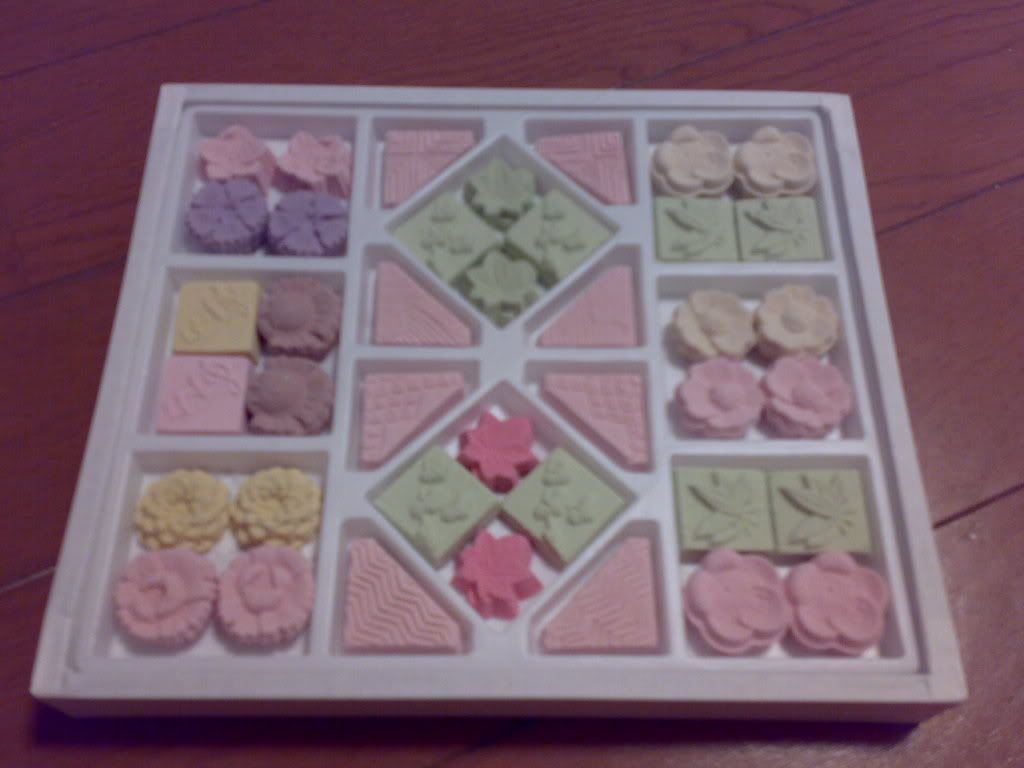
The homestay program is done twice a year, for harvest and for planting. If I'm still here next spring, I will definitely participate.
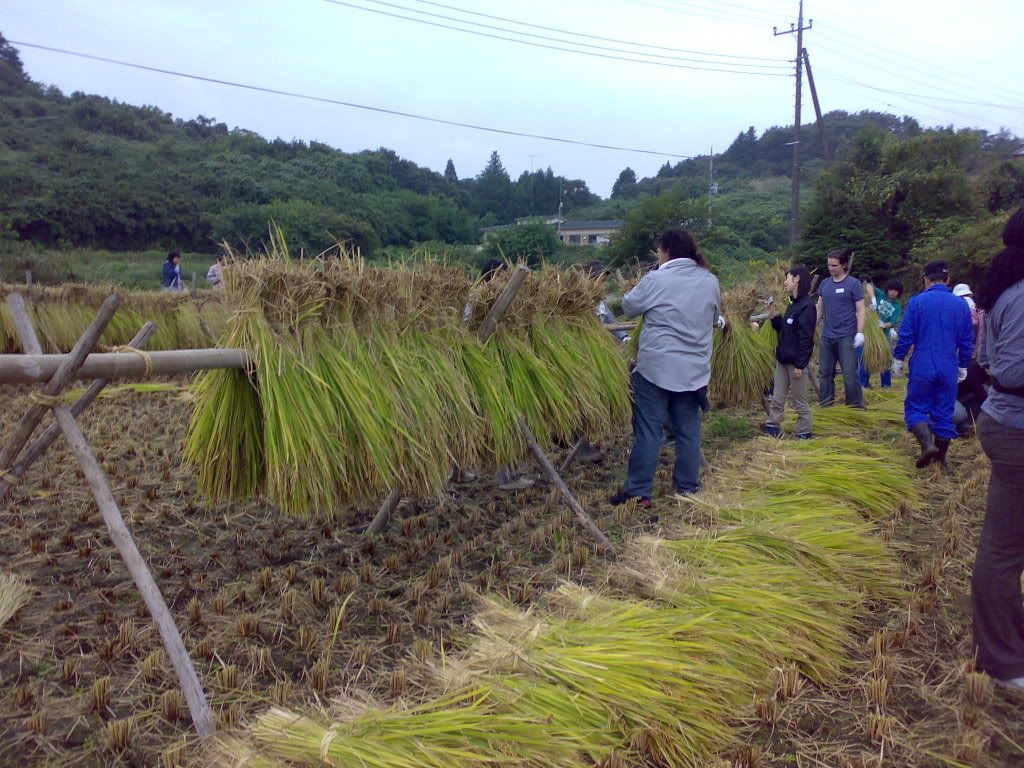
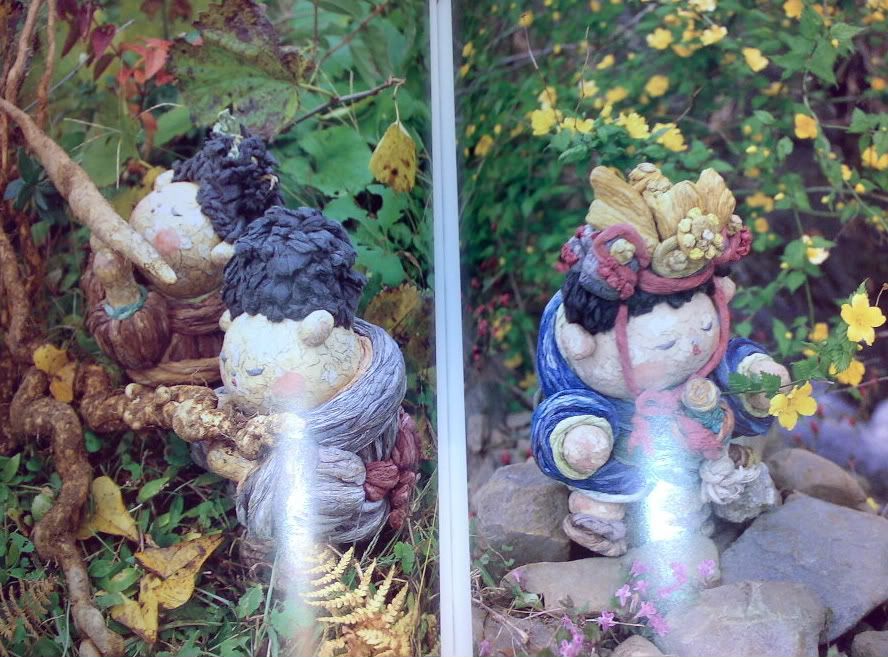

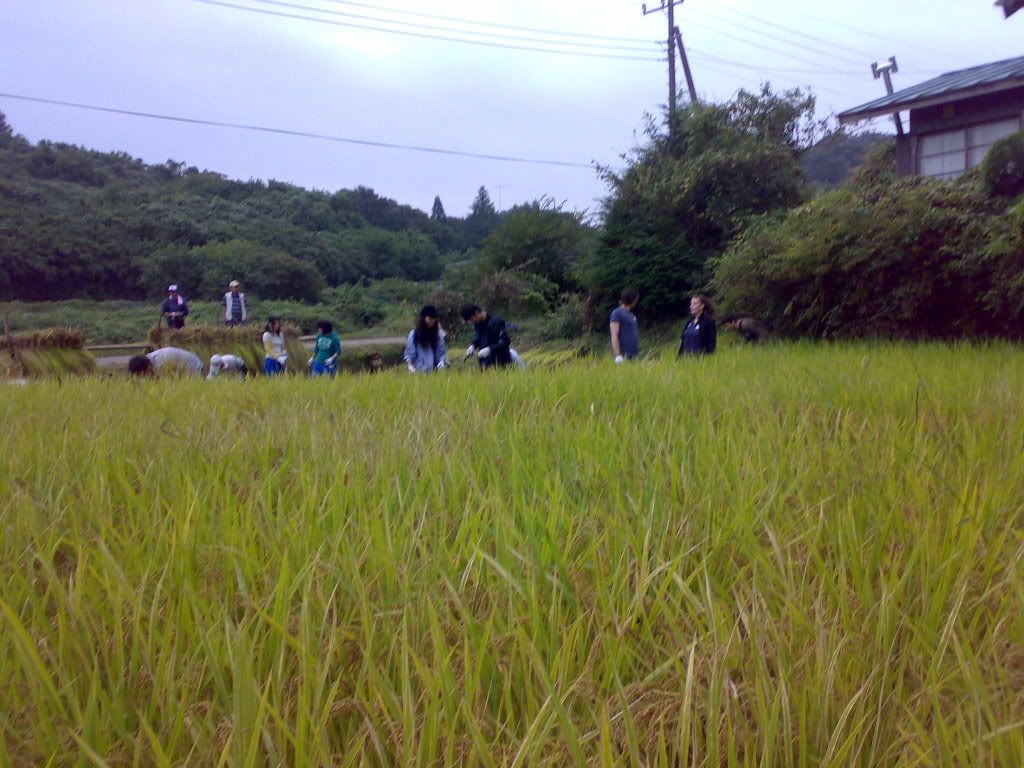
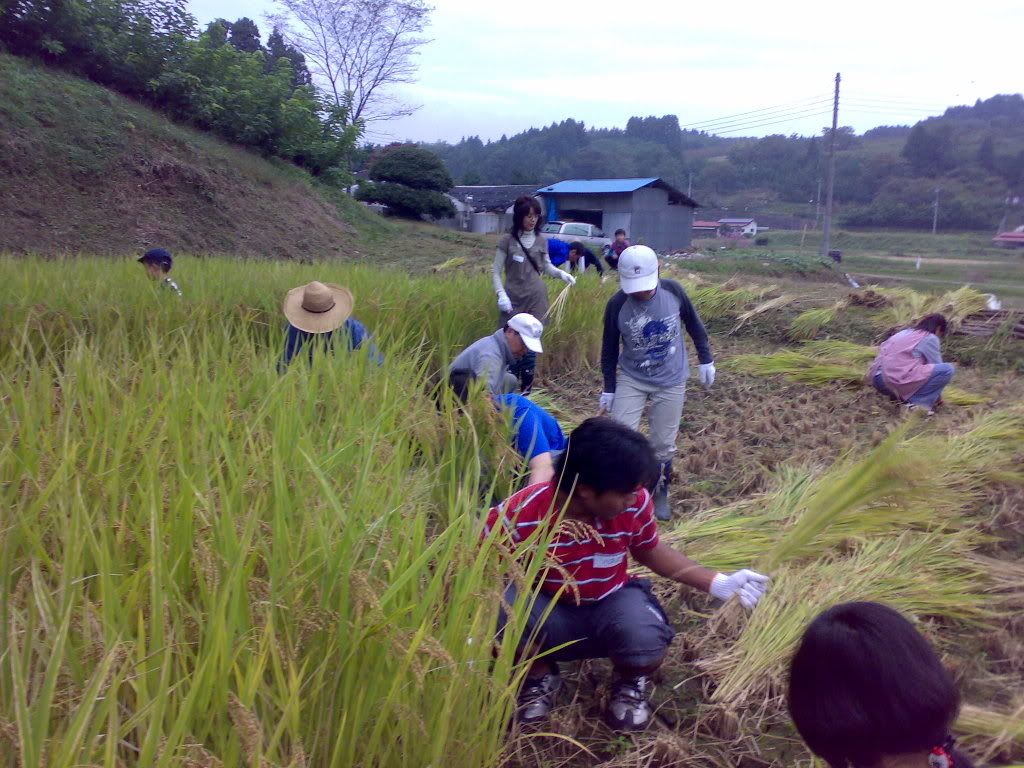
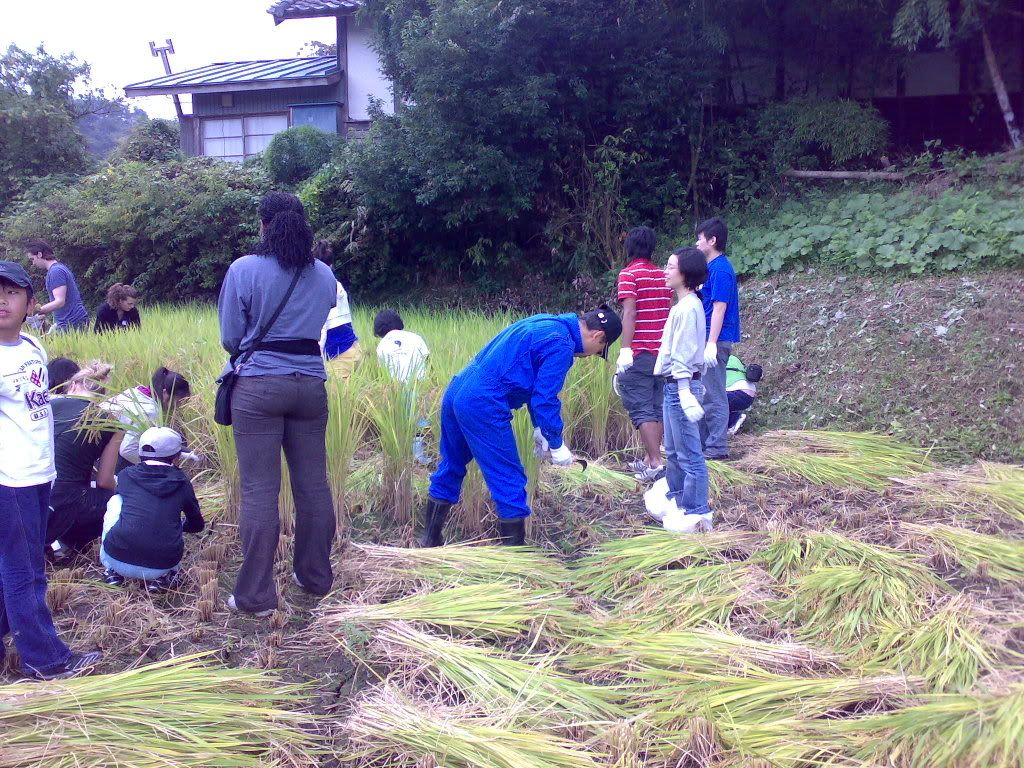
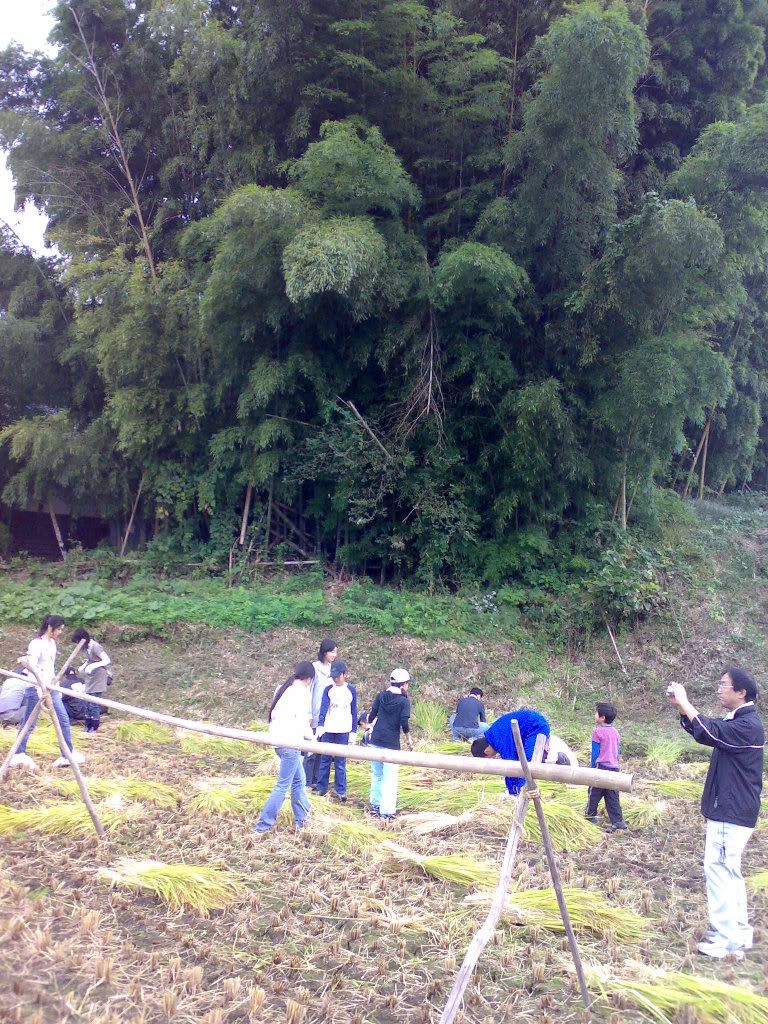
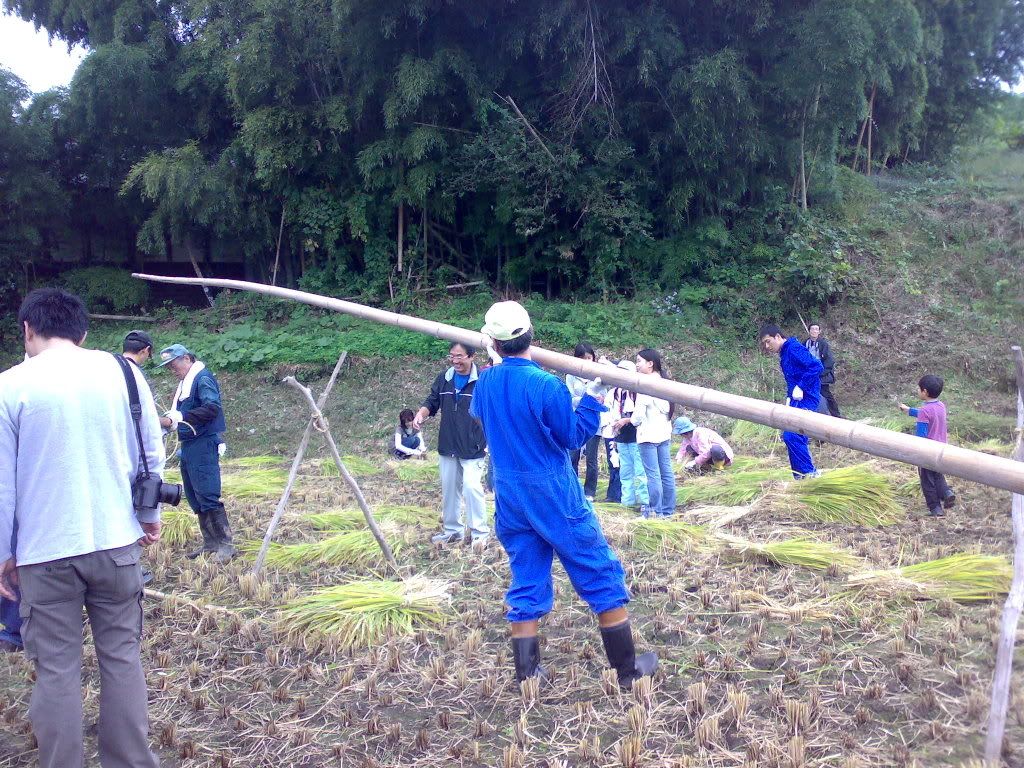
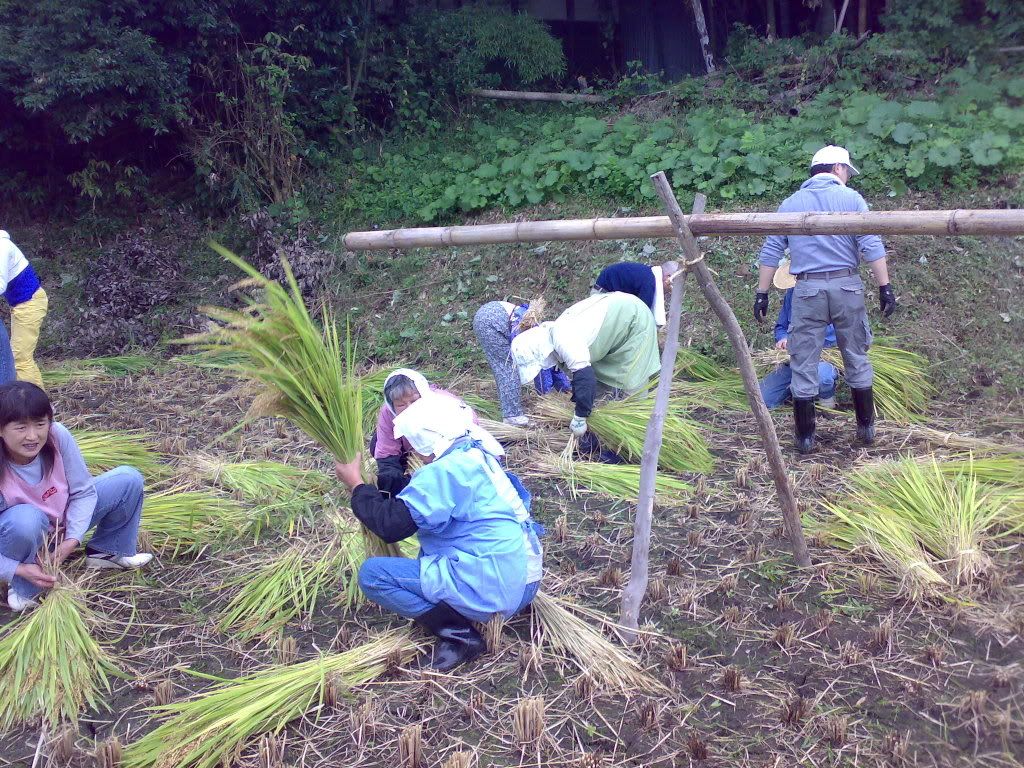
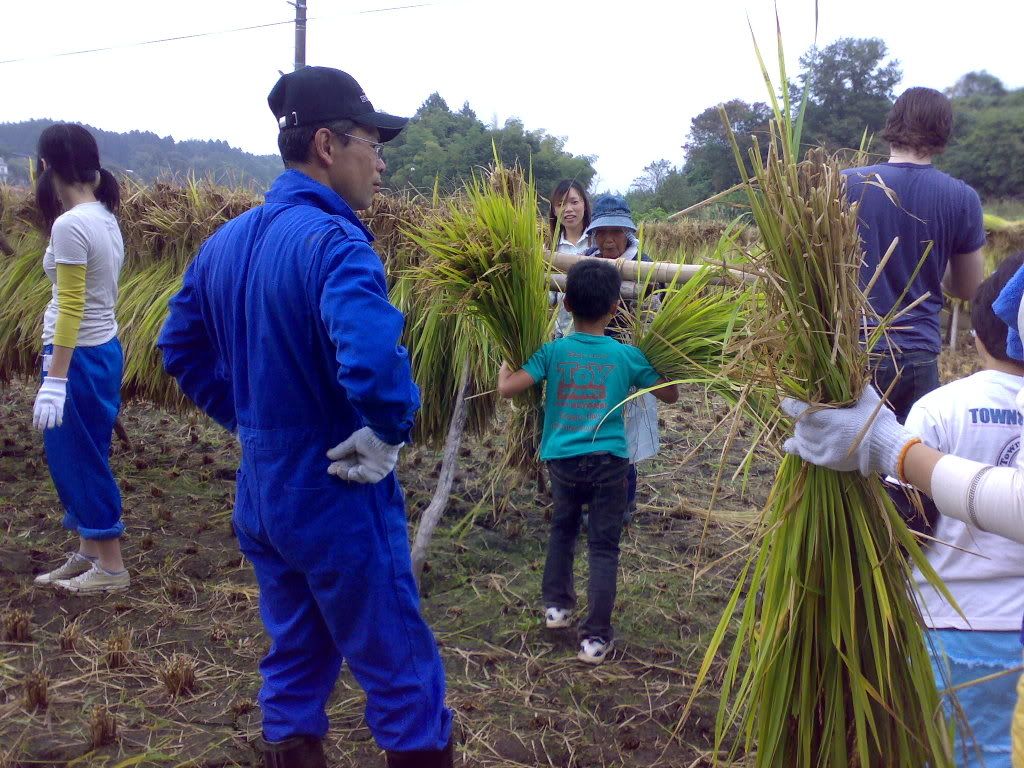
1 comment:
Em, where if i may ask do you get such lovely epigrams, perhaps from your lovely heart. .... I want Japan, love your father.
Post a Comment